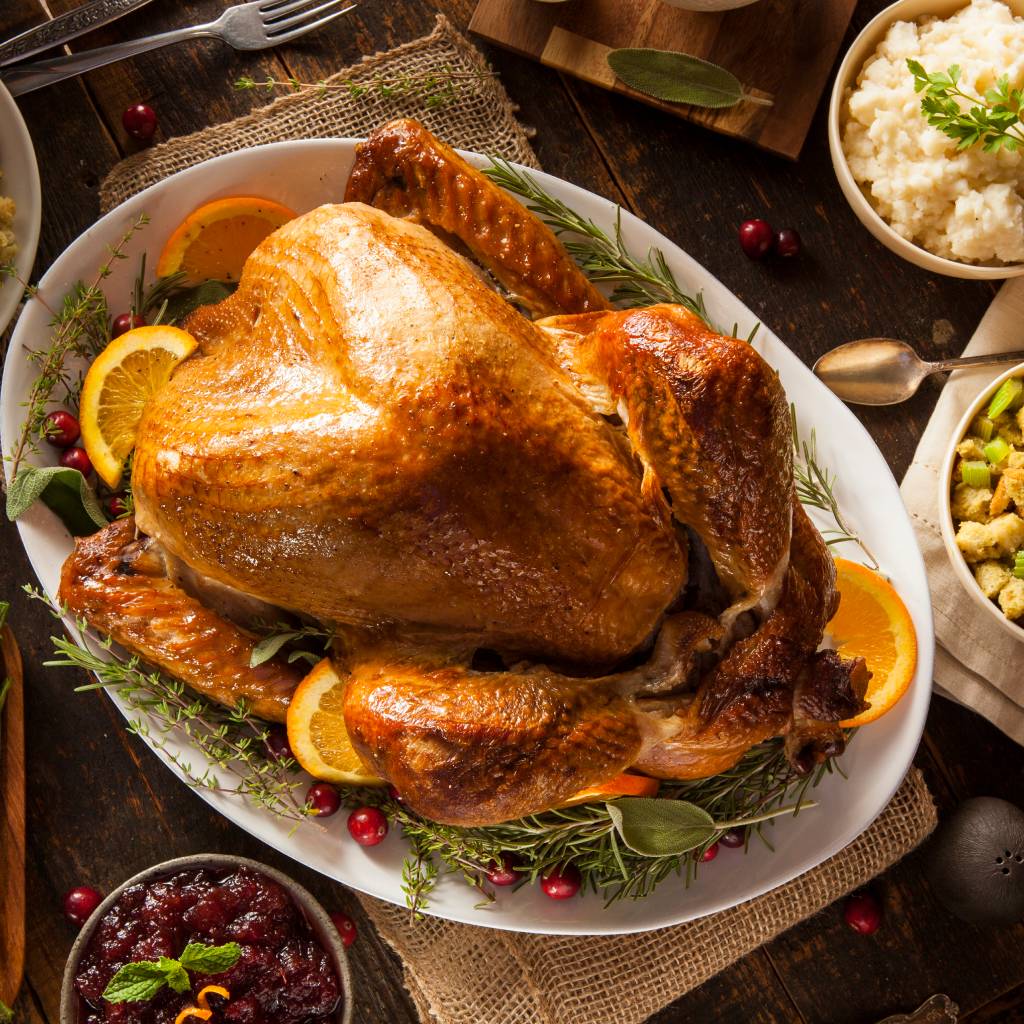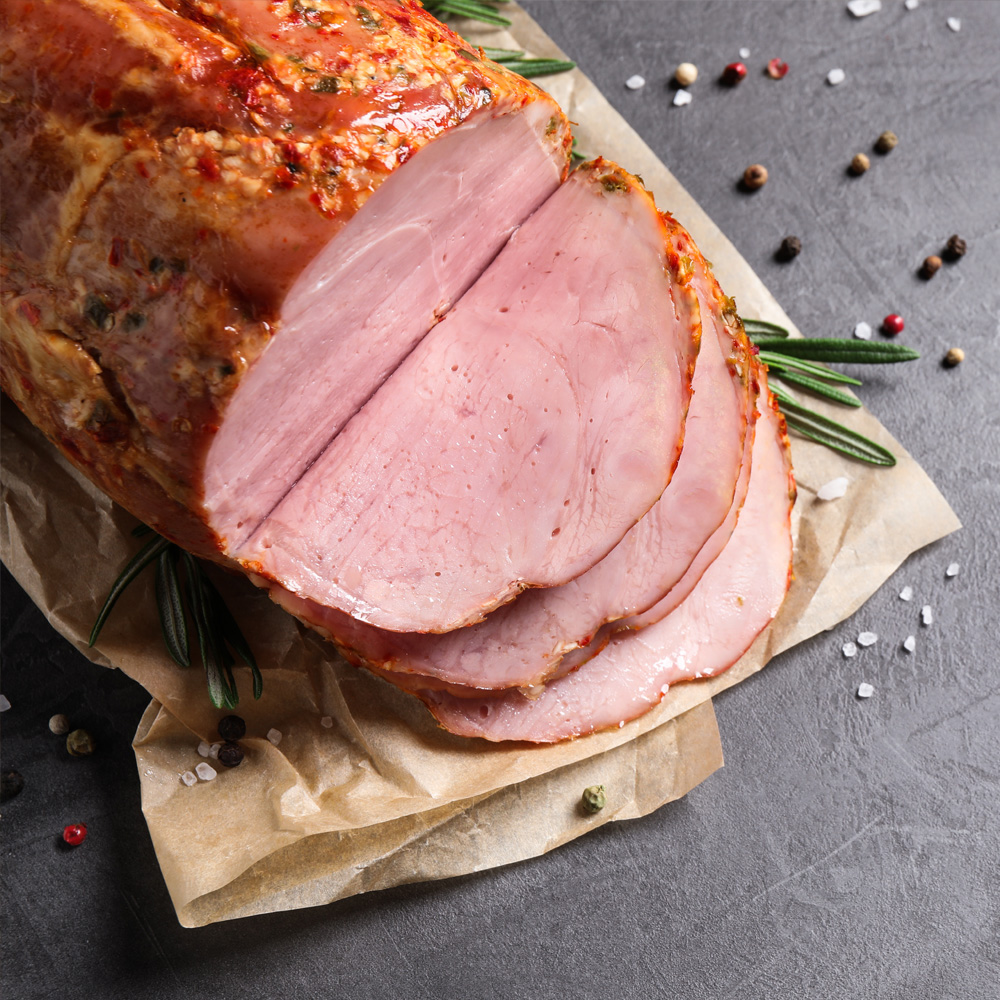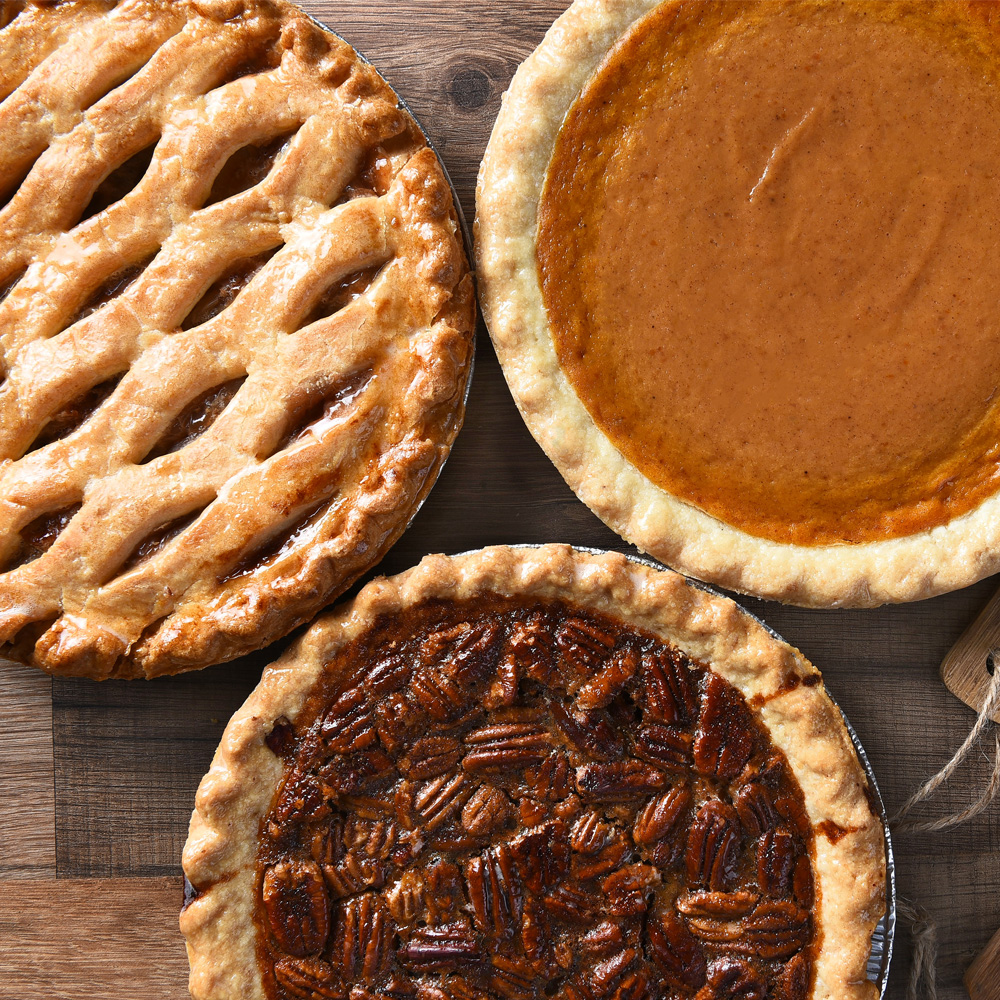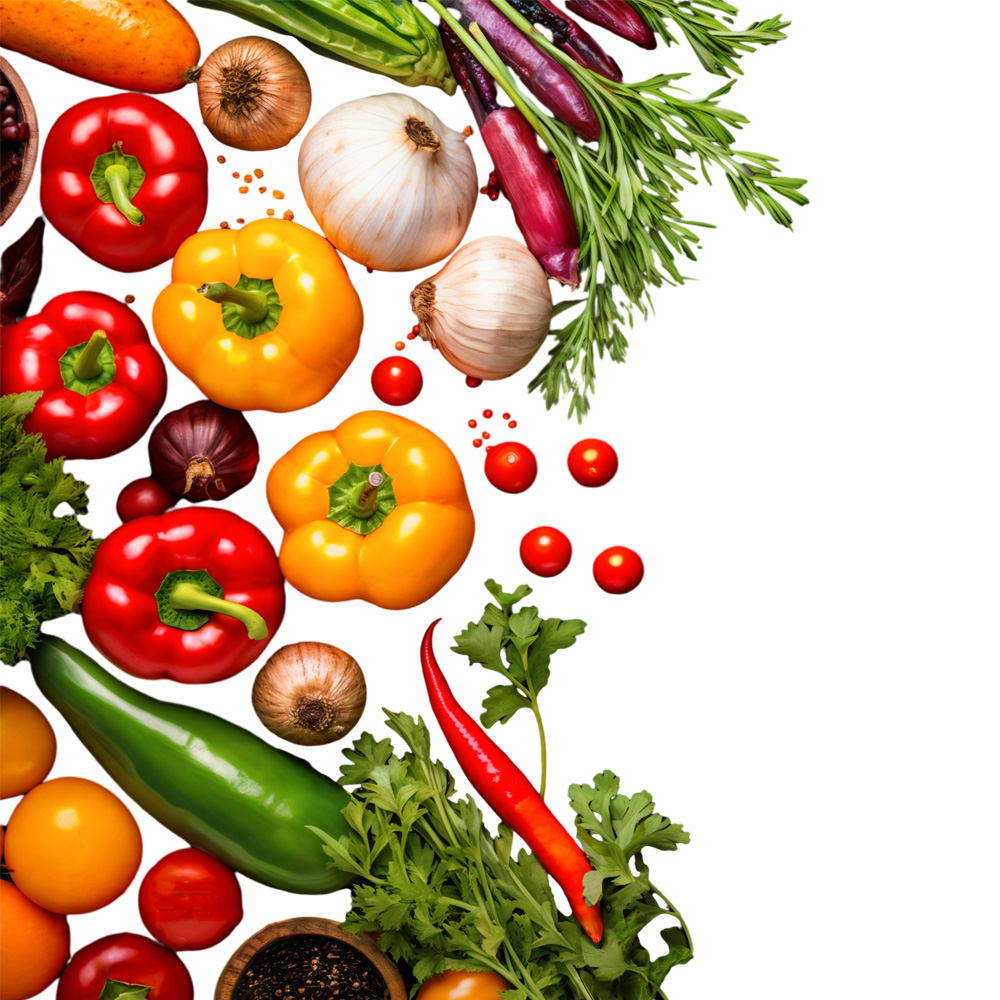
By mid-October, the supermarket checkout aisle is full of magazine covers, each boasting a glorious, burnished brown bird, claiming it’s the best turkey for Thanksgiving — so juicy and tempting, you can almost smell the savory aroma while you dig out your debit card.
And indeed, it’s not too soon to start thinking about stuffing (should it have bacon this year?), your other side dishes — and of course, the holiday centerpiece: a beautiful turkey.
Before you choose a bird, check out these five tips to keep in mind as you plan your holiday meal, whether you’re serving 25 aunts, uncles, and cousins or a simple Thanksgiving turkey feast for two.
gThankYou Talks Turkey Every Day
At gThankYou, we know that food serves as the perfect choice for showing appreciation and recognition to employees, partners, volunteers, business partners, and other stakeholders. We want your gift certificate recipients to have a positive experience from receiving the gift all the way to heating up delicious leftovers. If you or your recipients need any help picking the right turkey or ham, we can help! Check out our free ham and turkey guides in addition to our helpful blog posts. Enjoy!
1. Master This Terminology to Find the Best Turkey for Thanksgiving
Turkey seems straightforward enough — but the wealth of options available today can confuse shoppers who aren’t sure what they want or what certain labels mean. Here’s a quick glossary:

Free-Range
As Americans become more aware of the often-harsh conditions in which commercial poultry are raised, many are choosing free-range turkeys over better-known name brands. Under USDA standards, free-range birds must have access to the outdoors while they are raised. Along with other advocates of free-range turkeys, the regional farmers who raise them say the birds are of higher quality than their commercially processed counterparts, because their diets are more varied (improving the flavor of their meat), and they get more exercise (improving their texture).
Heritage
What are heritage turkeys? These unusual breeds were once common in America but fell out of favor as growers concentrated on the specially bred, big-breasted birds preferred by consumers (typically the Broad Breasted White turkey). Heritage varieties include Narragansett, American Bronze, Jersey Buff, and Bourbon Red.
Heritage turkeys generally offer less breast meat and a stronger flavor than a conventional Thanksgiving turkey. As a result, some expert cooks recommend not brining heritage birds, as doing so wipes out their unique flavor.
Natural
By federal regulation, a turkey labeled “natural” may not contain artificial flavorings, coloring, or chemical preservatives. The FDA considers the term “natural” to mean that nothing artificial or synthetic (including all color additives regardless of source) has been included in, or has been added to, a food that would not normally be expected to be in that food.
Natural turkeys must also be minimally processed, meaning they have only been handled as necessary to slaughter, clean, and make them ready for human consumption. Note that a “natural” designation doesn’t have to be free-range, and that “natural” isn’t the same as organic.
Organic
Organic turkeys are free-range birds that have not been treated with hormones or antibiotics and were given pesticide-free feed. Whether organic birds taste noticeably better is up for debate and presumably highly subjective. But if you ask any foodie, the lack of antibiotics alone may be reason enough to go this route.
Kosher
Quite simply, kosher turkeys are prepared under rabbinical supervision according to Jewish dietary law. While alive, these turkeys are given no antibiotics and fed a vegetarian diet. Then they’re covered with kosher salt and rinsed repeatedly in cold water. This can make for a juicier, tastier bird, but the process also means kosher turkeys are usually not entirely plucked before they’re sold, which can be a pain.
Self-Basting
A self-basting Thanksgiving turkey is injected with a solution to improve the flavor and juiciness of the meat. Some manufacturers treat only the breast meat, while others inject the entire bird. The label must say “basted” or “self-basted” and must list the amount and names of the ingredients used in the basting solution. Remember, the net weight of the turkey includes the weight added by the solution — so you could be paying more for less meat. Generally speaking, you do not need to brine a self-basting turkey yourself before cooking (which saves time). If you prefer to use your own brine solution, read the packaging closely to ensure your Thanksgiving centerpiece isn’t already basted.
Fully Cooked
A fully cooked whole turkey has been precooked and frozen by the processor. After thawing, it can be reheated (or served cold), which takes much less time than cooking a raw bird. Note, though: You can’t stuff a fully cooked turkey, as the dish isn’t in the oven long enough.
Young
A “young” turkey is a turkey of either sex that is less than 8 months old at the time of slaughter and are likely very tender. Most turkeys reach market maturity at 4-5 months of age.
Hen vs. Tom
Turkeys weighing 8-16 pounds are usually female (hens), while larger birds are male (toms). Since supermarket turkeys are normally slaughtered young, both hens and toms should be about the same in terms of taste, juiciness, and tenderness — so don’t fret too much over the sex of your bird.
As you might guess, the further you get from name-brand commercial turkeys, the more you’re likely to pay. Heritage and organic turkeys can be pricy. If you’re searching for something less expensive, consider Amish turkeys (which are generally natural and hormone-free) or free-range birds.
2. To Get the Right Size, Buy a Pound Per Person (or More)

Here’s a simple formula: Get 1 pound of Thanksgiving turkey for each adult you’re serving, and half a pound per child. If you have 10 adults and four kids to feed, you’ll want at least a 12-pound bird. If you’re inviting big eaters or counting on plenty of leftovers, make it 1.5 pounds per adult.
Once you hit the 16-pound mark, you can be less strict, as birds that big have a better ratio of meat to bone — e.g., a 20-pound turkey will serve 14 people just fine and yield plenty of leftovers.
3. For Many, Frozen Beats Fresh as the Best Turkey for Thanksgiving
As a rule, fresh food sounds better than frozen. But when considering which is the best turkey for Thanksgiving, it’s different. The term “fresh” applies to raw poultry that has never been stored below 26°F. Poultry held at 0°F or below must be labeled “frozen.” (Turkeys stored between 1°F and 25°F don’t have an official name, but are often labeled “refrigerated,” “hard-chilled,” or “previously frozen.”)
In other words, “fresh” only describes a turkey’s temperature from the time it was processed. It has nothing to do with how long it’s been sitting at the store.
And while some cooks rave about fresh-from-the-farm as the best turkey for Thanksgiving, frozen turkeys are often rated moister and more tender than fresh birds.
We recommend buying a frozen Thanksgiving turkey, as long as you have the time and the fridge space to thaw it safely — a 15-pound turkey will take about three full days to thaw.
4. Decide Your Recipes Before Shopping
Your recipe’s success can depend on the type of Thanksgiving turkey you choose. For instance, if you’re experimenting with an unusual brine or exotic seasonings, you probably don’t want a self-basting bird. Or if you’re planning to grill your turkey, you’ll want to be sure it’s not too big. (You also might want to consider asking your butcher to spatchcock it — remove the backbone — for you. This is an excellent method for roasting.) It’s wise to go into your turkey purchase with an idea of what you’d like to do.
5. Often the Best Turkey for Thanksgiving Needs to be Locked Down ASAP
 If you want a free-range, organic, or heritage bird as your Thanksgiving turkey, it’s not a bad idea to start planning in mid-October. (If you use a digital calendar, go set an annual reminder right now!) Local co-ops and groceries often begin reserving turkeys a few weeks in advance, and family farms like to know even sooner. You’re better off checking in early than missing the rush. And even if you’re just getting a regular frozen commercial bird, make sure you buy it far enough in advance (usually 3-5 days before Thanksgiving) so it has time to thaw.
If you want a free-range, organic, or heritage bird as your Thanksgiving turkey, it’s not a bad idea to start planning in mid-October. (If you use a digital calendar, go set an annual reminder right now!) Local co-ops and groceries often begin reserving turkeys a few weeks in advance, and family farms like to know even sooner. You’re better off checking in early than missing the rush. And even if you’re just getting a regular frozen commercial bird, make sure you buy it far enough in advance (usually 3-5 days before Thanksgiving) so it has time to thaw.
Learn More About gThankYou Certificates and Vouchers:
- Check out our Home Page
- See all our Gift Certificate Choices
- Learn more About gThankYou and FAQs
- See our FREE customizable Gratitude cards
- Reach us at 888-484-1658 or via info@gthankyou.com
Related Posts
- Your Ultimate Thanksgiving Turkey Guide
Download Your Free Thanksgiving Turkey Guide and Cookbook! Are you getting ready for Thanksgiving? For…
- Thanksgiving Turkey - When is it Done?
You're on Thanksgiving Turkey duty: it’s time for you and dozens of your relatives…
- Employees LOVE a Thanksgiving Turkey Gift Certificate
If your organization has a history with giving a frozen turkey gift to employees for…
- Why a Thanksgiving Turkey Gift is Meaningful
At gThankYou, we are passionate about what we do because it provides employers a way…



























